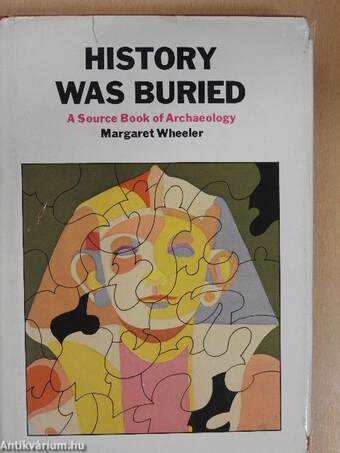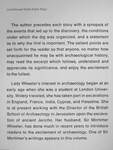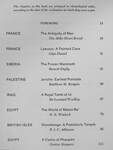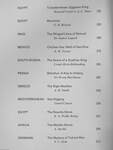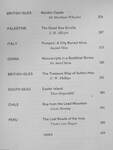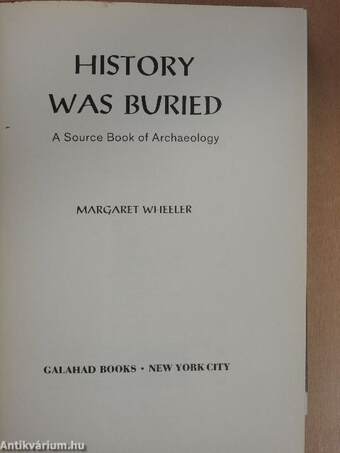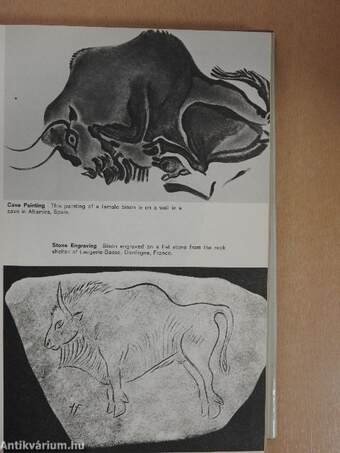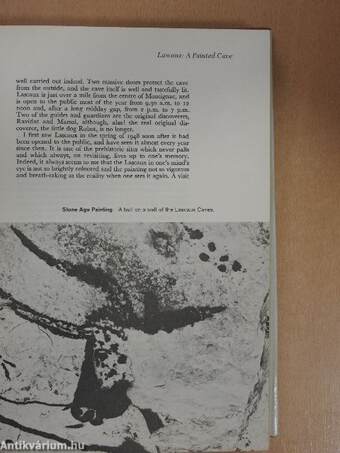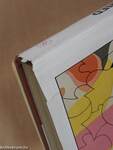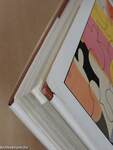1.117.306
kiadvánnyal nyújtjuk Magyarország legnagyobb antikvár könyv-kínálatát
History was buried
A Source Book of Archaeology
| Kiadó: | Galahad Books |
|---|---|
| Kiadás helye: | New York |
| Kiadás éve: | |
| Kötés típusa: | Ragasztott kemény kötés |
| Oldalszám: | 431 oldal |
| Sorozatcím: | |
| Kötetszám: | |
| Nyelv: | Angol |
| Méret: | 26 cm x 18 cm |
| ISBN: | 0-88365-285-4 |
| Megjegyzés: | Fekete-fehér fotókkal. További szerzők a kötetben. |
naponta értesítjük a beérkező friss
kiadványokról
naponta értesítjük a beérkező friss
kiadványokról
Fülszöveg
Tales of archaeological discovery—the finding of the
hidden—can be extremely absorbing. These discov-
eries are even more intriguing when related, first hand,
by the discoverer himself.
In this source book of archaeology, Lady Margaret
Wheeler has assembled the writings of some of the
foremost archaeologists of all time. These men tell-
sometimes in breathless prose—of buried cities, of
royal tombs, of a fabulous treasure ship dug from the
soil of East Anglia, of the complete body of a man
preserved in a peat bog for over 2,000 years. The
writers describe the finding of the Dead Sea Scrolls,
the discovery of the caves of Lascaux with their walls
decorated with pre-historic, colored drawings, how a
ship laden with works of art was excavated from the
bottom of the Mediterranean Sea where she floundered
during the century before the Christian era. Here, too,
is the story of the body of a frozen boy looking as if he
were merely asleep, though he died in the 15th... Tovább
Fülszöveg
Tales of archaeological discovery—the finding of the
hidden—can be extremely absorbing. These discov-
eries are even more intriguing when related, first hand,
by the discoverer himself.
In this source book of archaeology, Lady Margaret
Wheeler has assembled the writings of some of the
foremost archaeologists of all time. These men tell-
sometimes in breathless prose—of buried cities, of
royal tombs, of a fabulous treasure ship dug from the
soil of East Anglia, of the complete body of a man
preserved in a peat bog for over 2,000 years. The
writers describe the finding of the Dead Sea Scrolls,
the discovery of the caves of Lascaux with their walls
decorated with pre-historic, colored drawings, how a
ship laden with works of art was excavated from the
bottom of the Mediterranean Sea where she floundered
during the century before the Christian era. Here, too,
is the story of the body of a frozen boy looking as if he
were merely asleep, though he died in the 15th century.
In these pages, Howard Carter and A. C. Mace re-
count the most spectaculardiscovery of modern times,
the treasures of Tut-ankh-Amen who ruled Egypt 1,300
years before the Christian era.
In the year 79, the glorious city of Pompeii was com-
pletely buried and lost byavolcanic eruption. Eighteen
hundred years later, August Mau unearthed the ruins,
and from them, he reconstructed the life of ancient
Rome. Here, in this book, you have an excerpt from his
original report.
(continued from front flap)
The author precedes each story with a synopsis of
the events that led up to the discovery, the conditions
under which the dig was organized, and a statement
as to why the find is important. The salient points are
set forth for the reader so that anyone, no matter how
unacquainted he may be with archaeological history,
may read the excerpt which follows, understand and
appreciate its significance, and enjoy the excitement
to the fullest.
Lady Wheeler's interest in archaeology began at an
early age when she was a student at London Univer-
sity. Widely traveled, she has taken part in excavations
in England, France, India, Cyprus, and Palestine. She
is at present working with the Director of the British
School of Archaeology in Jerusalem upon the excava-
tion of ancient Jericho. Her husband, Sir Mortimer
Wheeler, has done much in recent years to introduce
readers to the excitement of archaeology. One of Sir
Mortimer's writings appears in this volume. Vissza
Témakörök
- Idegennyelv > Idegennyelvű könyvek > Angol > Művelődéstörténet
- Idegennyelv > Idegennyelvű könyvek > Angol > Történelem > Egyéb
- Művelődéstörténet > Civilizációtörténet > Egyéb
- Művelődéstörténet > Kultúra > Története
- Művelődéstörténet > Átfogó művek, tanulmányok
- Történelem > Idegennyelvű > Angol
- Régészet > Általános régészet, antropológia > Egyéb
- Idegennyelv > Idegennyelvű könyvek > Angol > Régészet > Általános régészet, antropológia
- Történelem > Tanulmányok
- Történelem > Régészet > Általános régészet, antropológia


